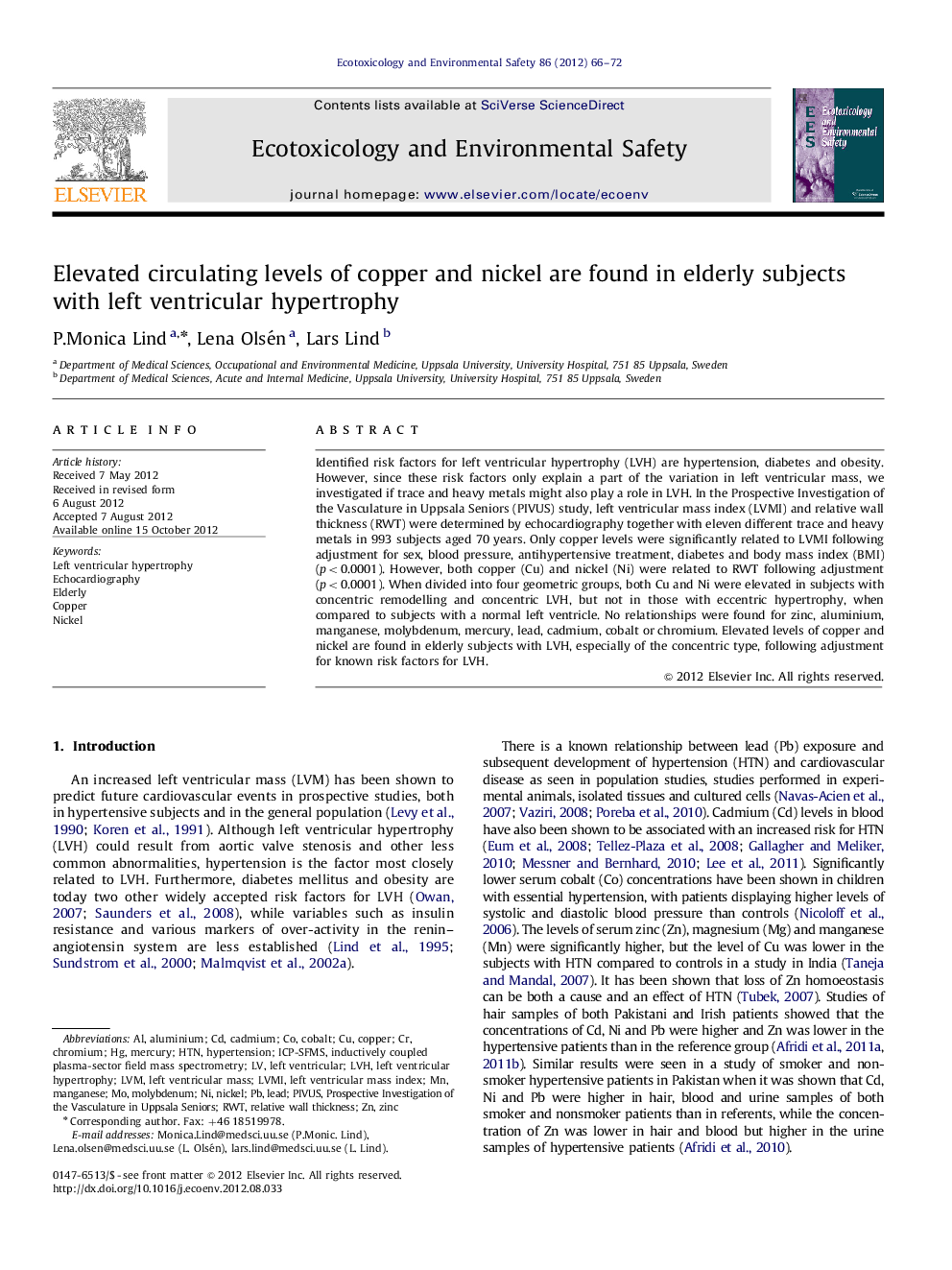| کد مقاله | کد نشریه | سال انتشار | مقاله انگلیسی | نسخه تمام متن |
|---|---|---|---|---|
| 4420545 | 1618977 | 2012 | 7 صفحه PDF | دانلود رایگان |

Identified risk factors for left ventricular hypertrophy (LVH) are hypertension, diabetes and obesity. However, since these risk factors only explain a part of the variation in left ventricular mass, we investigated if trace and heavy metals might also play a role in LVH. In the Prospective Investigation of the Vasculature in Uppsala Seniors (PIVUS) study, left ventricular mass index (LVMI) and relative wall thickness (RWT) were determined by echocardiography together with eleven different trace and heavy metals in 993 subjects aged 70 years. Only copper levels were significantly related to LVMI following adjustment for sex, blood pressure, antihypertensive treatment, diabetes and body mass index (BMI) (p<0.0001). However, both copper (Cu) and nickel (Ni) were related to RWT following adjustment (p<0.0001). When divided into four geometric groups, both Cu and Ni were elevated in subjects with concentric remodelling and concentric LVH, but not in those with eccentric hypertrophy, when compared to subjects with a normal left ventricle. No relationships were found for zinc, aluminium, manganese, molybdenum, mercury, lead, cadmium, cobalt or chromium. Elevated levels of copper and nickel are found in elderly subjects with LVH, especially of the concentric type, following adjustment for known risk factors for LVH.
► We examine correlation between levels of eleven metals and left ventricular hypertrophy in elderly.
► A cross-sectional study with 1016 subjects aged 70.
► Left ventricular mass index and relative wall thickness were determined by echocardiography.
► Elevated levels of copper and nickel were related to left ventricular hypertrophy.
Journal: Ecotoxicology and Environmental Safety - Volume 86, 1 December 2012, Pages 66–72